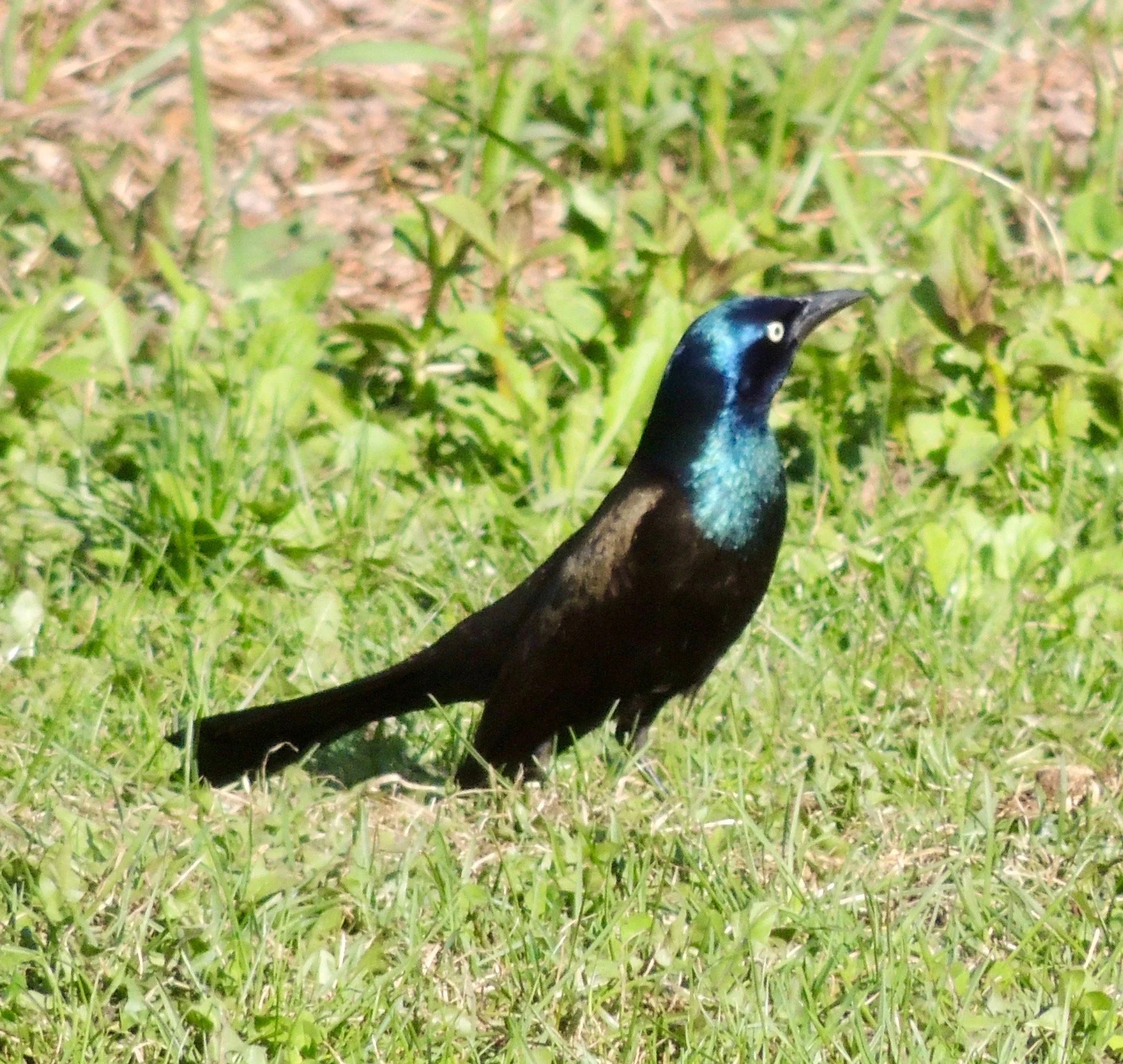Into the Woods with Curio: Iridescence
Doug Smith
“Like the appearance of a rainbow in the clouds on a rainy day, so was the radiance around him.” (Ezekiel 1:28)
Have you seen a hummingbird yet this spring? These tiny flying jewels usually arrive back in Ontario and at Beacon around Mother’s Day. It is always a joy to see them as they buzz about the garden near the Dining Hall, or elsewhere in camp. When you see one in the bright sunshine the iridescence of his throat ‘gorget’ can be dazzling.
What causes this spectacular display of colour? Part of it is structural. The minute parts of the feather, called the barbules, are like mini-prisms, splitting the light into its various components and acting like rain drops in a rainbow. Part of it has to do with the angle of the light. If you watch a hummer while it is sitting still, (not always easy) you will notice the flash of colour changes as the bird moves its head in relation to the light. Sometimes it is brilliant red, and other times it is dark, and not shiny at all.
Not all birds display iridescent coloured feathers, though many do. The feathers on a pigeon’s neck and head shimmer pink, while a wild turkey’s long neck has a bronze iridescence, and sometimes a green or red sheen along their wings and back. Tree swallows’ feathers are a shiny blue, as are barn swallows, though they are very different hues. Many blackbirds have iridescent feathers, including cowbirds, starlings and grackles. In all these songbird examples the male usually has shinier feathers than the female, for a variety of reasons, but mainly to attract the female. The female has to be less conspicuous because she is usually the one sitting on the nest of eggs, especially in the daytime.
Many other animals, from fish to butterflies to beetles, own these extravagant colours. The purpose of iridescent colouring in insects is not well understood. It may be to attract mates, or it may be to scare potential predators. It may even serve as a kind of camouflage, that is, the iridescence breaks up their shape so they are harder to find. Exactly how it is produced in the wings of beetles and butterflies is even more complex than the iridescence of bird feathers.
Is iridescence mentioned in the Bible? In chapter one of the old testament book of Ezekiel there is reference to the radiance of the vision Ezekiel had of God’s glory as, “an immense cloud with flashing lightning and surrounded by brilliant light. The center of the fire looked like glowing metal…”in verse 4, and also in verse 28(a), where God’s glory is described as, “like the appearance of a rainbow in the clouds on a rainy day…”.
Are we perhaps given a small, (literally) glimpse of what God’s glory may appear like when we witness the iridescence of a hummingbird, a butterfly or even a beetle?
